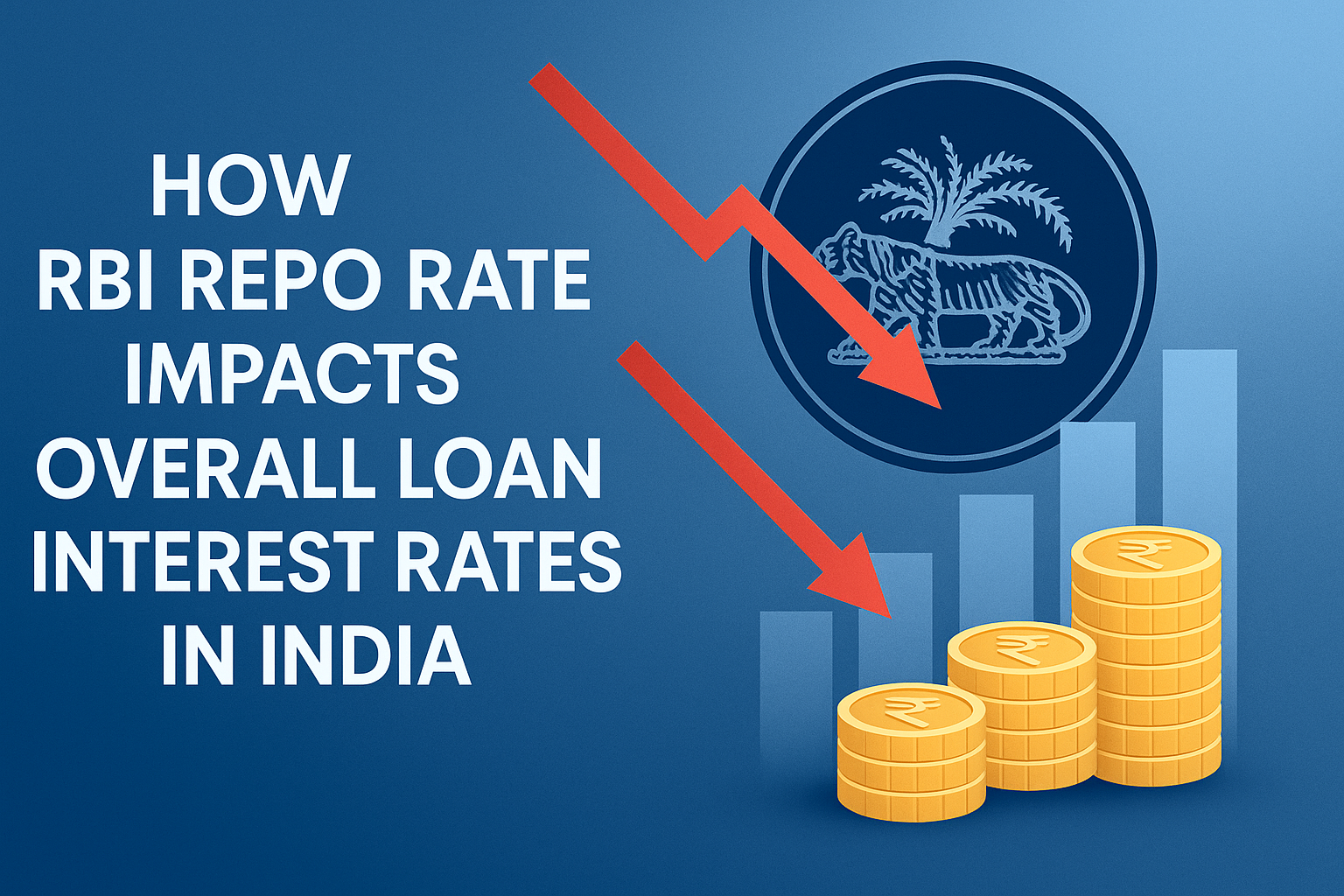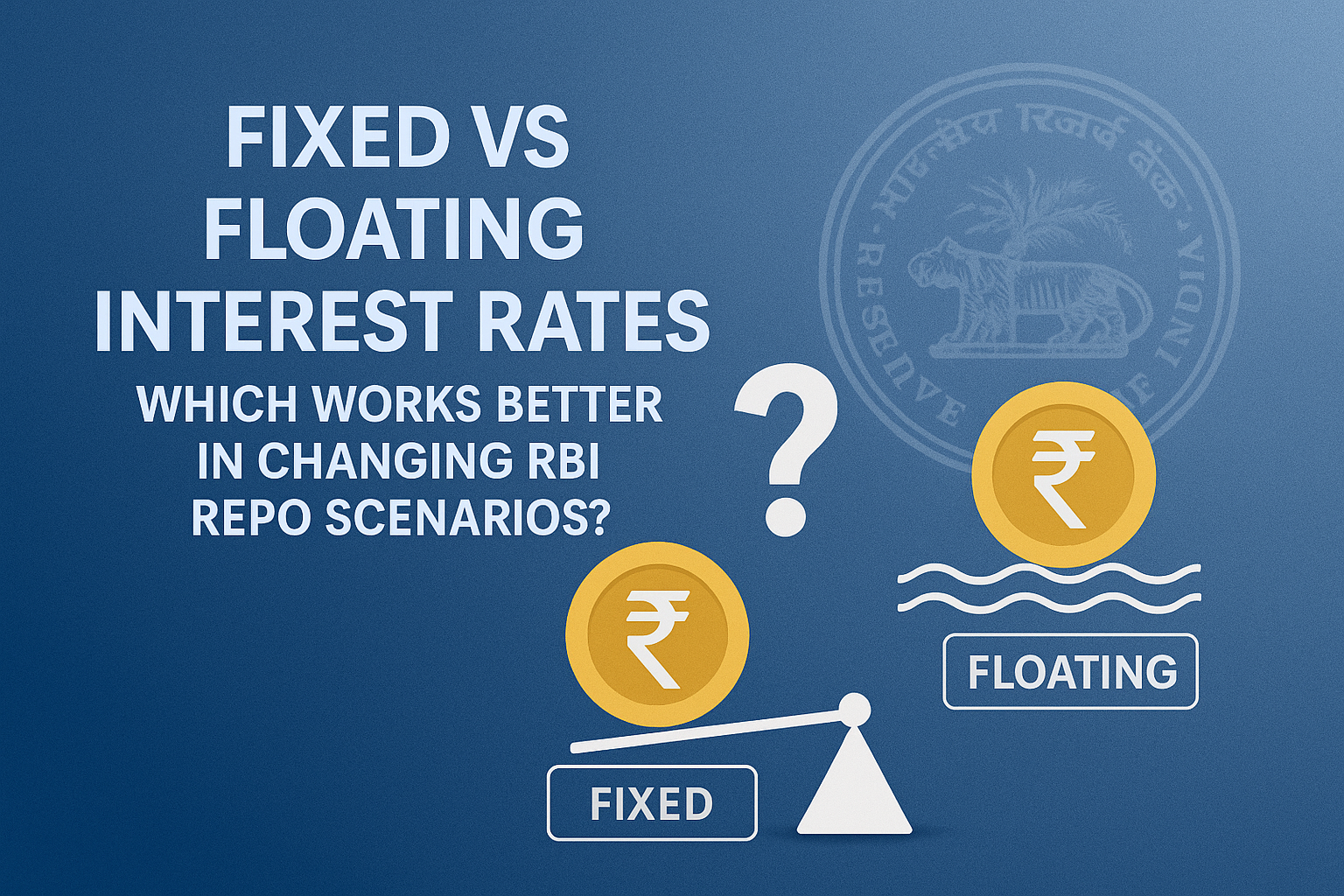How RBI Repo Rate Impacts Overall Loan Interest Rates in India

When it comes to borrowing money in India, one key factor that directly influences the cost of loans is the RBI repo rate. The Reserve Bank of India (RBI) uses the repo rate as a crucial monetary policy tool to control inflation, stabilize the economy, and regulate liquidity. But how does this directly affect the interest rates you pay on loans?
Let’s break it down !
What is the RBI Repo Rate?
The repo rate is the rate at which the Reserve Bank of India lends money to commercial banks. When banks need short-term funds, they borrow from the RBI at this repo rate. Changes in this rate have a ripple effect on the entire financial ecosystem, especially on loan interest rates.
How Repo Rate Influences Loan Interest Rates
- When the RBI increases the repo rate:
- Borrowing becomes costlier for commercial banks.
- Banks pass on this increased cost to consumers by raising loan interest rates.
- This leads to higher EMIs for borrowers across products like home loans, personal loans, car loans, and business loans.
- On the other hand, when the RBI reduces the repo rate:
- Banks can borrow funds at cheaper rates.
- They often lower loan interest rates to encourage borrowing.
- Borrowers benefit from reduced loan costs, which boosts overall spending and investment in the economy.
Why RBI Changes the Repo Rate
- The monetary policy decisions behind repo rate changes are influenced by multiple economic factors:
- Inflation control: High inflation often prompts a repo rate hike to reduce excess liquidity.
- Economic growth: To stimulate growth during a slowdown, the RBI may lower the repo rate.
- Currency stability: The repo rate also impacts foreign investment flows, which affect the strength of the rupee.
Sectors Directly Impacted by Repo Rate Changes
1) Home Loans:
Changes in the repo rate have an immediate effect on floating interest home loans. A lower repo rate translates to lower home loan interest rates, making homeownership more affordable.
2) Personal Loans & Auto Loans:
Personal loans and car loans are also impacted as lenders adjust their rates to remain competitive.
3) Corporate Borrowings:
Businesses benefit from lower borrowing costs when repo rates are reduced, allowing for expansion and investment.
How Borrowers Should Respond to Repo Rate Changes
- Stay informed: Monitor RBI announcements regularly.
- Choose loan products wisely: Fixed-rate loans offer stability, while floating-rate loans fluctuate with repo rate movements.
- Consider refinancing: When repo rates fall significantly, explore refinancing options to reduce your existing loan burden.
Conclusion
The RBI repo rate plays a pivotal role in shaping the lending landscape in India. Every movement in this rate directly influences how much individuals, businesses, and institutions pay to borrow money. For homebuyers, even a small shift can significantly alter the affordability of a home loan over its tenure. For businesses, repo rate adjustments can impact their expansion plans, capital investments, and operational costs.
As a borrower, it’s essential to stay proactive:
- Monitor RBI’s monetary policy announcements regularly.
- Review your current loan structure and explore options like balance transfers or refinancing if rates move in your favor.
- Consult with financial advisors or lending experts to make informed decisions that align with your long-term financial goals.
By understanding the repo rate's impact on loan interest rates, you can navigate the dynamic financial landscape confidently. Whether you're a first-time homebuyer, an entrepreneur, or someone managing personal finances, being aware of these changes helps you optimize your borrowing strategy, save more over time, and build a strong financial future.
Note: IndiBlogHub features both user-submitted and editorial content. We do not verify third-party contributions. Read our Disclaimer and Privacy Policyfor details.







